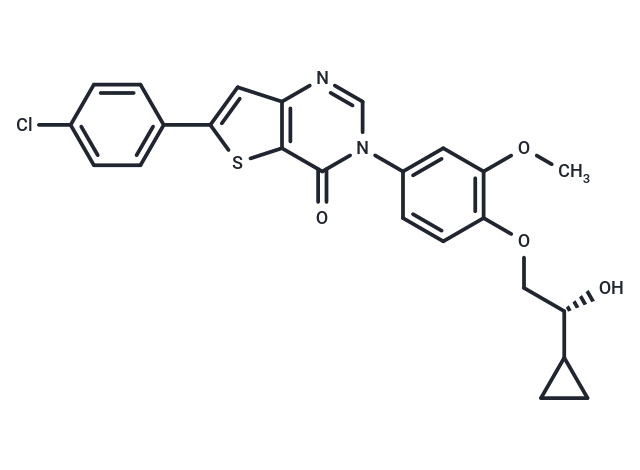Shopping Cart
- Remove All
 Your shopping cart is currently empty
Your shopping cart is currently empty

BMS-819881, a melanin-concentrating hormone receptor 1 (MCHR1) antagonist, binds rat MCHR1 with a Ki of 7 nM, and is selective and potent for CYP3A4 activity with an EC50 of 13 μM.

| Pack Size | Price | Availability | Quantity |
|---|---|---|---|
| 25 mg | $1,520 | 6-8 weeks | |
| 50 mg | $1,980 | 6-8 weeks | |
| 100 mg | $2,500 | 6-8 weeks |
| Description | BMS-819881, a melanin-concentrating hormone receptor 1 (MCHR1) antagonist, binds rat MCHR1 with a Ki of 7 nM, and is selective and potent for CYP3A4 activity with an EC50 of 13 μM. |
| Targets&IC50 | CYP3A4:13 μM (EC50), MCHR1 (rat):7 nM (ki) |
| In vitro | BMS-819881 (Compound 27) binds 99.8% to rat serum proteins with a rat MCHR1 Ki of 7 nM. In cytochrome P450 (CYP) assays, it shows EC50 values >40 μM for CYP1A2, CYP2C9, CYP2C19, and CYP2D6, but 13 μM for CYP3A4. Binding to serum proteins is species-dependent: 99.8% in rats, 99.6% in dogs, and 99.3% in monkeys. FLIPR-based assays indicate BMS-819881 is a potent and selective MCHR1 antagonist (Kb=32 nM) that blocks MCH-stimulated Ca2+ mobilization in MCHR1-overexpressing cells but not in MCHR2-expressing cells at 10 μM. No activity is observed at 10 μM against a panel of 20 GPCRs associated with feeding homeostasis [1]. |
| In vivo | BMS-819881 exhibits a moderate terminal elimination half-life, with values recorded at 5.7 hours for rats, 32±8 hours for dogs, and 14±3 hours for cynomolgus monkeys, all administered at a dosage of 1 mg/kg intravenously[1]. |
| Molecular Weight | 468.95 |
| Formula | C24H21ClN2O4S |
| Cas No. | 1197420-05-5 |
| Relative Density. | no data available |
| Storage | Powder: -20°C for 3 years | In solvent: -80°C for 1 year | Shipping with blue ice. |

Copyright © 2015-2025 TargetMol Chemicals Inc. All Rights Reserved.